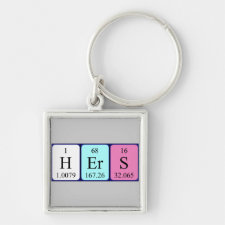
Authors: Frasconi M, Tel-Vered R, Riskin M, Willner I
Article Title: Electrified Selective "Sponges" Made of Au Nanoparticles.
Publication date: 2010
Journal: Journal of the American Chemical Society
Volume: 132
Issue: (27)
Page numbers: 9373-9382.
DOI: 10.1021/ja102153f
Abstract: Imprinted Au nanoparticle (NP) composites are assembled on Au surfaces by the electropolymerization of thioaniline-functionalized Au NPs in the presence of the imprint molecules, picric acid (1), N,N'-dimethyl-4,4'-bipyridinium (2), and N,N'-dimethylbipyridinium-4,4'-ethylene dichloride (3). The existence of π-donor-acceptor complexes between the substrates (1-3) and theπ-donor thioaniline units associated with the Au NPs or the π-donor bis-aniline bridges cross-linking the Au NPs on the electrode surfaces led to the formation of the imprinted sites. Upon elimination of the electron acceptors (1-3) from the Au NP matrices, molecular contours for the selective binding of the respective substrates are generated. The bis-aniline bridges linking the Au NPs in the composite exhibit quasireversible redox properties. At E < 0.12 V vs Ag quasireference electrode (QRE), the bridges exist in the reduced bis-aniline, π-donor state, whereas at E > 0.12 V vs Ag QRE, the bridging units exist in the quinoid, π-acceptor state. As a result, the potential-induced uptake and release of any of the π-acceptor substrates 1-3 is accomplished. While at E < 0.12 V, the π-acceptor substrates bind to the Au NP matrices through π-donor-acceptor interactions, at E > 0.12 V, the bound substrates are released from the matrices, due to transformation of the bridging units to the quinoid π-acceptor state, which lacks binding affinity for the substrates. The binding and release of the substrates 1-3 to and from the Au NP composites are followed by surface plasmon resonance (SPR) spectroscopy, and the quantitative assay of the uptake and release is monitored by the extent of fluorescence quenching of the solution-soluble fluorescent labels, meso-tetramethyl pyridinium porphyrin (TMPyP4+) or Zn(II)-meso-tetraphenylsulfonatoporphyrin (Zn-TPPS4-). The electrostimulated functions of the Au NP "sponges" are controlled by several means: (i) Imprinting of the molecular contours for 1-3 in the Au NP composites generates high-affinity binding sites for the imprinted substrates. This leads to higher contents of the bound substrates at the Au NP sponges, as compared to the nonimprinted Au NP composites, and to an impressive selectivity in the association of the imprinted substrates. (ii) The binding capacity of the Au NP composites is substantially improved by the electrosynthesis of the matrices on a rough Pt black support bound to the base Au electrode
Template and target information: picric acid, 2,4,6-trinitrophenol, N,N'-dimethyl-4,4'-bipyridinium, N,N'-dimethylbipyridinium-4,4'-ethylene dichloride



Join the Society for Molecular Imprinting

New items RSS feed
Sign-up for e-mail updates:
Choose between receiving an occasional newsletter or more frequent e-mail alerts.
Click here to go to the sign-up page.
Is your name elemental or peptidic? Enter your name and find out by clicking either of the buttons below!
Other products you may like:
 MIPdatabase
MIPdatabase









